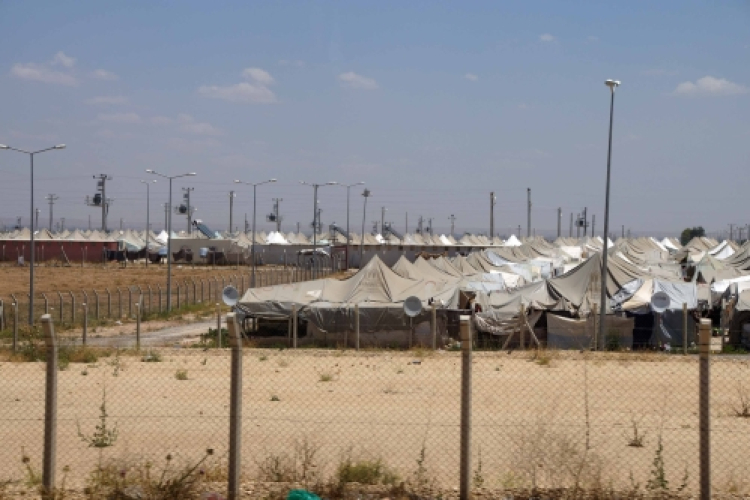What's Wrong with the World? Our Need for Transformation

It’s easy to look at the world and get discouraged. Wars, pandemics, cancer, inflation, mental health challenges, and flooding just to scratch the surface. Our classrooms are often a microcosm of the world, and there too we see problems like trauma, broken homes, increased mental health issues, closing the educational gaps left from COVID, diminishing attention spans, competition with social media at ever earlier ages, bullying, and poverty. Two responses typically arise. Many blame God. All the suffering and pain disproves a loving, good God in their view. But instead of blaming God, a second response might be to ask him, ‘Why is the world the way it is?’ I believe He has an answer, and we help our students by teaching them His perspective. That knowledge is core to both understanding themselves and making sense of what’s going on around them.
If we believe God created the world as the first words of the Bible claim, then it’s appropriate to ask Him, the Creator/Owner, what is going on. Did He intend for things to become as they are? In Genesis we learn that God created a good earth, providing all His creation needed and an environment of unobstructed relationship with Him. So, what happened? How did we get from there to where we are today? The first several chapters of Genesis tell the story.
God created people in His image. One aspect of being made in His image is that humans have choice. Yet there was another being in the story who was working against God and His good plans. This enemy, the devil, tempted our first mother and father to believe a lie about God (that He is not good nor to be trusted), a tool he still employs.
Adam and Eve, our first parents, exercised their choice and believed the lie with disastrous results. The Apostle Paul in the New Testament calls this original choice sin. Sin leads to death. Paul says, “When Adam sinned, sin entered the world. Adam’s sin brought death, so death spread to everyone, for everyone sinned” (Romans 5:12).[1] A sin nature was now part of our human genetic makeup. Sin brought not only death, but also pain, shame, weeds, hardship, and a broken relationship with God our creator and with each other. Sin is responsible for the mess we see around us.
God didn’t cause sin and all the problems resulting, but He did provide a fix. “For Adam’s sin led to condemnation, but God’s free gift leads to our being made right with God, even though we are guilty of many sins. For the sin of this one man, Adam, caused death to rule over many. But even greater is God’s wonderful grace and his gift of righteousness, for all who receive it will live in triumph over sin and death through this one man, Jesus Christ.... So just as sin ruled over all people and brought them to death, now God’s wonderful grace rules instead giving us right standing with God and resulting in eternal life through Jesus Christ our Lord” (Romans 5:16-17, 21).
So, what are the implications for us as teachers who have been given new life through Christ and for our classrooms? We have the privilege of modeling imperfectly the new life Christ gives. We teach students through our lessons and lives what new life looks like. Paul encouraged his young student to “…be an example in what you say, in the way you live, your love, your faith, and your purity” (1 Timothy 4:12). He reminds Timothy, “Keep a close watch on how you live and on your teaching. Stay true to what is right for the sake of your own salvation and the salvation of those who hear you” (4:16). This is a good reminder for those of us who teach. When we reflect Christ imperfectly, and we will, we can apologize and model a return to the right path.
 Helping our students understand the source of evil can equip them to face disappointment and to choose a path that leads to life. It gives them a framework from which to view and understand what is going on around them. It can lead them to personal confession and repentance. It can rescue them from cynicism and hopelessness. And it can motivate them to be a light in this dark world and live by the principles of God’s kingdom.
Helping our students understand the source of evil can equip them to face disappointment and to choose a path that leads to life. It gives them a framework from which to view and understand what is going on around them. It can lead them to personal confession and repentance. It can rescue them from cynicism and hopelessness. And it can motivate them to be a light in this dark world and live by the principles of God’s kingdom.
Kimberly Drage and Tim Davy identify 6 lenses for suffering:[2]
- Persecution: a result of hostility toward the people of God
- Spiritual warfare: initiated by spiritual forces
- Discipline: suffering can be a form of discipline designed by God to form our character
- Cost: a part of the costly nature of following Jesus
- Sin: a consequence of sin
- Mystery: at times we don’t have an explanation, so we trust God and continue doing what it right (1 Peter 4:19)
These may be helpful in explaining some of the reasons for suffering.
As teachers, we can model and urge our students to become agents of redemption and transformation in this broken world. We also live with the confident hope that God will one day make things right again. John had a revelation of this future event – “Then I saw a new heaven and a new earth, for the old heaven and the old earth had disappeared…I heard a loud shout from the throne, ‘Look, the home of God is now among his people! He will live with them, and they will be his people. God himself will be with them. He will remove all their sorrows, and there will be no more death or sorrow or crying or pain. For the old world and its evils are gone forever’” (Revelation 21:1, 3-4). Things are not as they should be, but one day all will be made right.
Mark Giebink
Mark is privileged to lead a team of great people who provide Member Care to those serving around the world as agents of transformation through TeachBeyond. God captured his heart and life 50 years ago as a child and has been transforming him through the roles of husband, Dad, Papa, and pastor. He lives on 1.3 acres in the desert of Phoenix with his family, a tiny house Air B&B, and a variety of animals.
[1] Scripture quotations are taken from the Holy Bible, New Living Translation, copyright © 1996, 2004, 2015 by Tyndale House Foundation. Used by permission of Tyndale House Publishers, Inc., Carol Stream, Illinois 60188. All rights reserved.
[2] Drage, K., & Davy, T. J. (2023). The stories we tell and why they matter. In G. Whiteman & H. Pubols (Eds.), Essentials for people care and development: A collection of best practices, research, reflections, and strategies. Missio Nexus. You can find Drage & Davy’s chapter as a part of the book sample at this link: https://missionexus.org/wp-content/uploads/2023/09/Art.-People-Care.-Sample.pdf
Photo Credits
Refugee Camp. Shutterstock. Resized.
Group Reading Together. Shutterstock. Resized.



